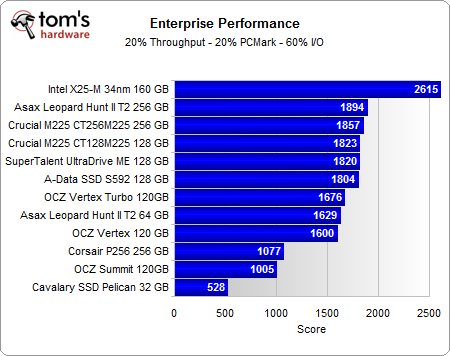SSD Summer Slam: 12 New 2.5" And 1.8" Drives Rounded-Up
Conclusion
The good news is that none of the 12 SSDs we reviewed left a bad impression. Only one product, the Cavalry Pelican SSD, failed to reach the performance level we’d expect from modern drives (200+ MB/s reads for desktop/mobile type SSDs). Every other drive delivered more than 200 MB/s maximum read throughput and write throughput superior to many 2.5” hard drives. At the same time, power consumption tops out at 2.3W and typically stays well below that. For the first time, all SSDs truly deliver on what the marketing departments have been promising all along: much increased storage performance at low power consumption. If you want SSD, we’re happy to say that your purchase will finally be worth it.
However, there still are differences between drives, despite many vendors building with the same blocks (namely Indilinx controllers). OCZ went extreme with the Vertex Turbo and overclocked the cache memory in an effort to increase throughput. The company succeeded, but at the expense of I/O performance. Asax, Crucial, and Super Talent were also very strong on throughput. Corsair, Intel, and OCZ’s Summit proved extremely efficient at idle and moderate loads, making them great for ultra-mobile notebooks.
Even six months ago, it was easy to identify winners and brand the losers. But most of these SSDs will do great in your PC or notebook. Intel’s new 34nm X25-M isn’t very different from preceding drives. It still offers the same performance and hence falls behind in terms of writes, but the X25-M still stomps the yard on delivering high performance in I/Os, despite relatively high I/O power consumption.
We recommend you examine the individual benchmark results and find the perfect drive for your application. To help, we created two performance indices: one for desktop users putting more emphasis on throughput and application benchmarks, and a second for enterprise users looking for a decent drive in entry-level servers or workstations. Keep in mind that most of these drives weren’t designed for servers, so the second index doesn’t reflect support, reliability, compatibility, and so on.
Performance Summaries: Desktop
Performance Summaries: Enterprise
Get Tom's Hardware's best news and in-depth reviews, straight to your inbox.

